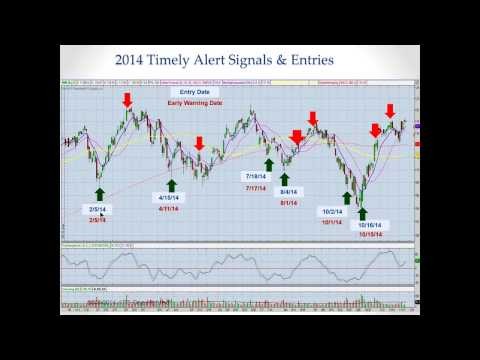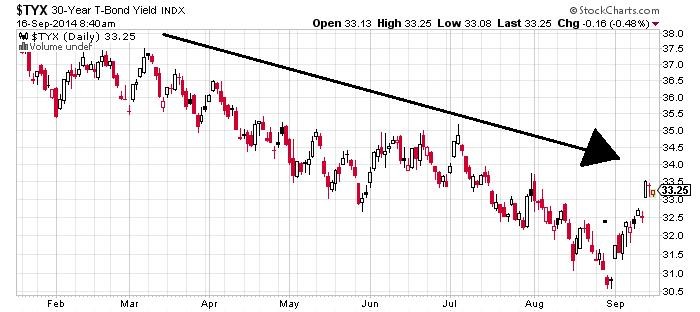ETFs a warnin XIV
Post on: 10 Май, 2015 No Comment

Some time ago (May 2012) I wrote two articles about ETFs suggesting they were The Next Accident Waiting to Happen. In that first part I described how they work and who owns and runs them. My argument was that,
I think the signs are already there to suggest ETFs are where the instability and risk is accumulating. If I am in any way correct then ETFs will be to the next stage in our on-going state of siege-mentality crisis what CDOs were to the last.
In part two I looked at exactly how,
the clever boys and girls of finance have found ‘innovative’ ways of pumping those ETFs up a bit, just like they did to Securities.
I detailed the alarming number of different ways ETFs and their market are being mutated into a monster of instability just as securities, CDOs and the like, were before them. I wondered about how many ETFs would be stuffed with high-risk sovereign bonds but held with a risk weighting of zero? I ended by suggesting that the claims being made for ETFs, of access to high returns via a product that massages away the risks, were as false now as they were when the same was said of mortgage backed securities in 2007.
I ended by saying,
ETFs have in their DNA everything it takes to become monstrously dangerous. They are wide open to all the fraud and shitty behaviour the banks seem not to be able to stop themselves from bathing in. They are awash in leverage and riding on a tide of derivatives which hide so much concentration of counterparty risk that it makes a mockery of ‘risk management’.
I havent written much about ETFs since, except for one brief update on bank etfs .
Then this week I have read a flurry of articles which set the alarm bells ringing.
First there was Andrew Haldanes testimony before MPs at the House of Commons. Mr Haldane is Director of Risk Management at the Bank of England and in my opinion by far the brightest person there.
Mr Haldane made his bosses at the BoE very uncomfortable when, as the Guardian reported. he rather bluntly told MPs,
Lets be clear. Weve intentionally blown the biggest government bond bubble in history, Haldane said. We need to be vigilant to the consequences of that bubble deflating more quickly than [we] might otherwise have wanted.
As if one cue Mr Bernanke confirmed earlier hints and guesses that the FED would start to reduce its bond buying from its current level of $85 billion a month, at some point this year. The response to which has been days of frantic selling of not just bonds but everything not nailed down. This served to accelerate a sell off that has been going on globally for the last month.
The Hang Seng in China has lost 10.62% in the last month. The Nikkei is down 8.6% In Europe, the FTSE has lost 7.8% while the Italian market is down 11.94%. In America the DOW is down 3.5% while Gold has lost 7.45%. All in one month.
At the very least this makes rather clear that at least that much of the traded value of everything was never anything more than the bubble price inflated by the floods of central bank money flooding every market. The question unanswered is how much more of the value of stocks and bonds will suddenly turn out to be similarly illusory?
And that uncertainly is making the markets more and more volatile and unstable. Which brings me back to ETFs, because the marketing claims for ETF are that they give smaller investors a chance to get exposure to which means invest in products that are normally only available to very large investors, such as sovereign bonds, or are not normally available locally such as foreign stocks and bonds from Korea or China for example or because they would normally be thought of as too risky and volatile.
But ETFs claim to make the exotic available locally, the volatile stable and safe and the institutional sized, available in bite sizes. And people have been buying into the promise of return without the risk again.
The article began,
As a result of what it identifies as a ‘mega-trend’ within the investment industry as ETF inflows continue to grow at record levels, Deutsche Bank anticipates 50% growth of assets under management in its passive investment business by 2015, with fixed income ETF’s playing a significant role in that target.
A mega trend from ordinary stocks into ETFs.
In 2012, net new inflows into ETFs totalled US$262bn – the highest level on record for the industry. And 2013 remains on course for yet another bumper year with net inflows year-to-date at US$110bn – already 30% up on the same point a year ago.
Impressive or concerning as this growth is, it is the growth in what are called fixed income ETFs which caught my attention. Fixed income ETFs are those which invest in bonds: corporate, municipal and sovereign. Most ETFS have some bonds in them but some, the Fixed Income kind, specialize.
According to a report from Blackrock inc. the worlds largest asset manager and one of the largest ETF managers as well, in an article at Bloomberg ,
Exchange-traded funds that buy fixed-income securities may boost their assets more than six- fold to $2 trillion in the next 10 years as they transform the way bonds are traded, according to BlackRock Inc.
According to the Deutsche Bank study as the amount of debt in the world goes up as it already dramatically has,
The funds will also benefit from a likely shift in the average investor’s holdings to include a greater proportion of debt, the report says.
Of course part of the reason the average investor will choose to hold more debt is because he will have been assured that with ETFs he will be able to get exposure to the higher returns without any great risk. And in part that assurance will rest on the sales pitch which says, ETFs are a way of investing in a basket of products carefully chosen to track the whole market, rather that investing in a single stock or bond, AND unlike more old fashioned types of funds, which can only be sold at the end of each day, with ETFs you can trade them minute by minute just like stocks.
So according to those who sell ETFs it is all good.
“It’s really changing how to invest in the fixed-income market” by making it more transparent and liquid, Tucker, head of BlackRock’s iShares fixed-income investment strategy
More transparent you know what you own and more liquid. Liquid that word again. Of course it used to be that securities, especially mortgage backed ones, and the CDOs based on them, were very liquid. And those who traded in them, especially those who traded in the CDS insurance, like AIG, which made such securities so super safe they used to be the ones who provided all the liquidity. Until of course they didnt. But that was then and this is now and the banks and brokers have all learned so much and everything is so much better and safer that nothing like that could happen with ETFs could it?

A wave of selling caused many exchange traded funds to tumble below the value of their underlying assets as a bond market sell-off caused stress in the $2tn ETFindustry.
So if you owned an ETF of a stock it was worth less than the actual stock. Congrats.
According to Bryce James, president of Smart Portfolio, which provides ETF asset allocation models, quoted in the FT
The losses for ETFs today were far beyond what the most sophisticated financial risk models could have predicated for worst-case scenarios,
More than the models predicted fo even their worst case. Hmm, where have I heard that before?
Not only that but,
The selling also caused disruptions in the plumbing behind several ETFs. Citigroup stopped accepting orders to redeem underlying assets from ETF issuers, after one trading desk reached its allocated risk limits.
Oops. Thats called a lock in. You cant sell when you would really like to and have to sit there while the value of the thing you are not allowed to sell goes down and down. So much for providing liquidity. Just like securities and CDOs before them, ETFs and those who make the market in them, provide liquidity when all is well but when everyone really needs it, when large losses are being made the liquidity disappears and instead we are told of rare occurrences and risk limits.
I described in those first two articles how this might happen through the concentration of ownership and counterparty risk within a very few large players.
And it wasnt just Citi.
Tim Coyne, global head of ETF capital markets at State Street, said his company had contacted participants “to say we were not going to do any cash redemptions today”. But he added that redemptions “in kind” were still taking place.
State Street, like Blackrock is one of the largest ETF players and market makers. They are the ones who provide all that yummy liquidity. Except on that day they didnt, did they?
Of course everyone involved claimed this was a very rare occurrence.
So lets recap. Bonds are the biggest bubble in history. They are also the largest growth component in the bureoning ETF market which claims to be a safer version of what the securities market once claimed it was safe, liquid and transparent.
I used to think ETFs were an accident waiting to happen. I still do. I just think the likely arrival date of that accident has moved quite a lot closer.














